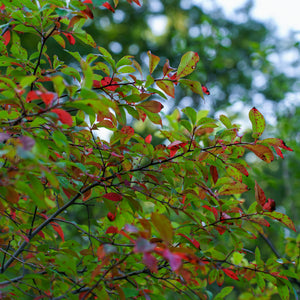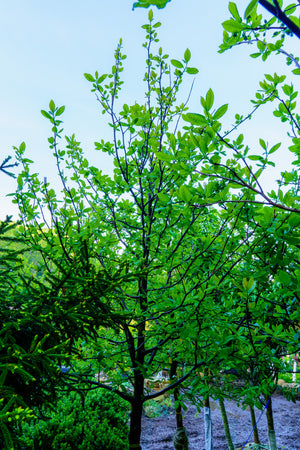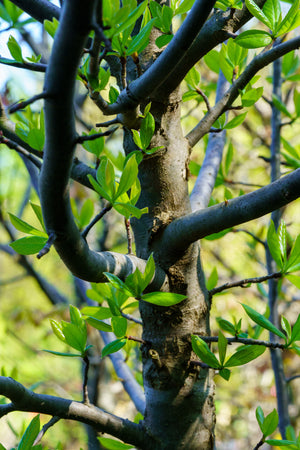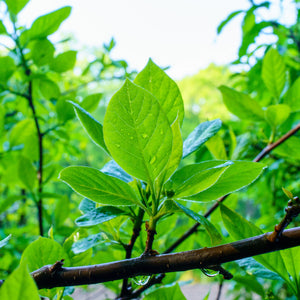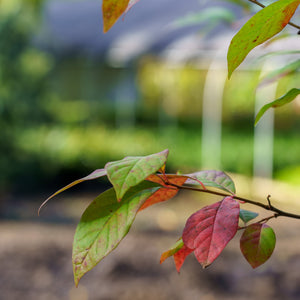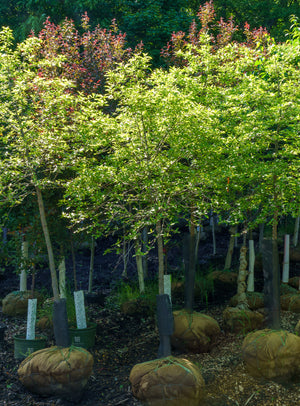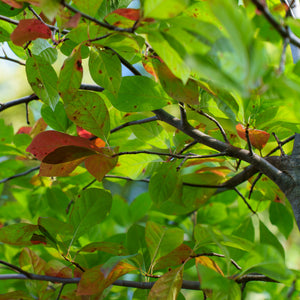Black Gum: A Beacon of Brilliant Fall Foliage
Welcome to this week's edition of our Plant of the Week series. We are excited to showcase the Black Gum (Nyssa sylvatica), a tree that stands out in any landscape with its stunning fall display and year-round charm. Known for its striking autumn foliage and adaptability, the Black Gum is a favorite among both home gardeners and landscape designers. Join us as we dive into what makes this beautiful tree a timeless and essential addition to any outdoor space.
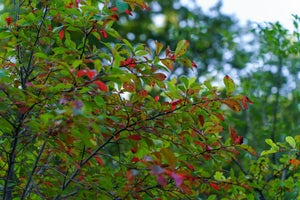
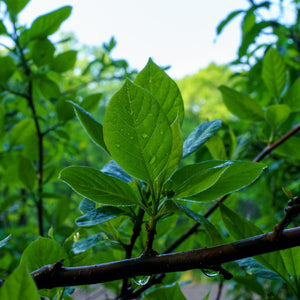
What Makes Black Gum Special?
The Black Gum, also known as the Black Tupelo or Sour Gum, is a deciduous tree that is celebrated for its vibrant fall foliage, which ranges from bright yellow to fiery red and deep purple, often all on the same tree. This spectacle of color makes it one of the most breathtaking sights during autumn.
In addition to its fall brilliance, the Black Gum has dark green, glossy leaves in the summer, providing a rich, lush canopy that transforms any landscape into a picturesque retreat. The tree’s bark, which is deeply ridged and furrowed, adds a textured visual interest, especially in the winter months when its leaves have fallen.
Black Gum is also appreciated for its adaptability. It can grow in a variety of soils, including moist, well-drained soils, and even withstands occasional flooding. Its tolerance to varying climates and environments makes it a resilient choice for a wide range of landscapes.
Furthermore, this tree is long-lived and resistant to pests and diseases, adding to its appeal as a low-maintenance option for homeowners and landscapers. With a mature height of 30 to 50 feet and a spread of 20 to 30 feet, the Black Gum is perfect for medium to large landscapes, providing shade, structure, and seasonal beauty.
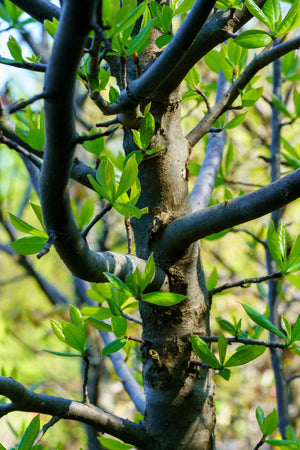
What is Black Gum Used For?
Ornamental Value: Black Gum is primarily valued for its incredible display of autumn foliage. Its brilliant color palette is unmatched, making it a showstopper in any garden or public space. Whether used as a specimen tree or in a mixed planting, it always draws attention.
Shade Provider: The dense, pyramidal crown of the Black Gum makes it an excellent shade tree. It is often planted in parks, large gardens, or as a street tree, where its wide canopy provides shelter from the sun while adding aesthetic beauty.
Wildlife Habitat: The Black Gum is a great choice for supporting local ecosystems. Its small, bluish-black fruits are a favorite of birds, including robins, thrushes, and mockingbirds, while the dense foliage offers shelter for various wildlife.
Erosion Control: Thanks to its robust root system, Black Gum is often planted on slopes or near water bodies to help prevent soil erosion. Its roots stabilize the soil, making it a practical choice for areas prone to erosion.
Wood: The wood of Black Gum is dense and hard, making it valuable for producing items such as furniture, tool handles, and veneers. Though not typically used in residential landscapes for this purpose, the wood is still recognized for its strength.
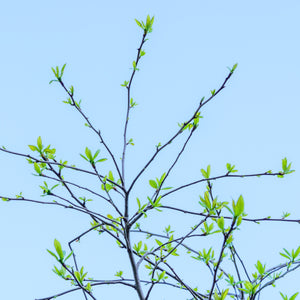
How to Care for Black Gum
Planting: Choose a location with full sun to partial shade and well-drained, slightly acidic soil. Black Gum adapts to various soil types, including clay, loam, and sandy soils. It is best to plant this tree in the fall or early spring to allow its root system to establish.
Watering: The Black Gum prefers consistent moisture, particularly during its early growth years. It can tolerate occasional flooding but does best in evenly moist, well-drained soil. Water deeply and regularly during hot, dry periods to maintain its health and vibrant foliage.
Pruning: Minimal pruning is required, but it's a good idea to remove dead, damaged, or crossing branches in the winter while the tree is dormant. This will help maintain the tree's natural shape and promote healthy growth.
Fertilizing: Black Gum is not a heavy feeder, but applying a balanced, slow-release fertilizer in the spring will encourage healthy growth and enhance its fall color. Avoid fertilizing after mid-summer to allow the tree to harden off before winter.
Mulching: Apply a 2-3 inch layer of organic mulch around the base of the tree, leaving a gap around the trunk to avoid moisture buildup. Mulching helps to retain soil moisture, regulate temperature, and reduce weeds.
Protection: While Black Gum is generally resistant to pests and diseases, young trees may need protection from harsh winter winds. You can wrap the trunk in burlap during the first few years to safeguard it against extreme cold.
CONCLUSION
The Black Gum (Nyssa sylvatica) is a magnificent tree that brings year-round interest to any landscape. With its unparalleled fall color, robust adaptability, and ability to support local wildlife, it is a top choice for those looking to add both beauty and practicality to their garden or property. Easy to care for and stunning in every season, the Black Gum is a tree that will continue to impress for decades to come.

